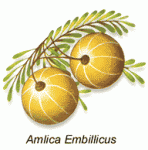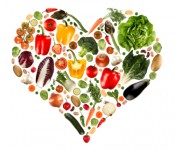
Amla fruit, better known as the Indian Gooseberry is a bitter, sour, astringent and stringy fruit. It grows on a tree capable reaching a height of eighteen meters with far reaching branches and a twisted trunk. Given what it tastes like, it’s very difficult to understand why anyone would eat it, but amla is actually quite special.
In initial research, the Phyllanthus emblica – that’s the scientific name for Alma fruit – has demonstrated both antiviral and anti-microbial properties. There is more evidence from research that extracts of amla fruit can initiate apoptosis (programmed cell death) in some bone cells which are directly connected with rheumatoid arthritis and osteoporosis.
As recently as 2011, a research study found that treatment using the Phyllanthus emblica lowered the severity of acute pancreatitis and also created unassisted restoration and regeneration of the pancreas right after a severe occurance.
In another study, recently conducts with diabetic rats, an amla fruit extract produced a substantial reduction of the blood glucose and triglyceridemic measurements and at the same time it improved liver function by normalizing the performance of a liver-specific enzyme.
Amla is additionally being examined as an anti-cancer agent and a few test preparations produced using various components of the tree – including the fruit- have demonstrated some potential against laboratory models for inflammation, diabetes, some types of age related renal (kidney) disease and some cancers. It has been proven to prevent cataracts in diabetic sufferers. In a Japanese study amla fruit extracts prevented the creation of cancerous cells, specifically cells from the womb, skin and stomach.
Amla fruit has been demonstrated to lower blood cholesterol levels in men. In India, where the Amla fruit naturally grows, it’s used by all-natural healers to manage premature hair loss. A potent antioxidant, Amla has a high density of tannins.
Along with its other recognized anti inflammatory properties, The Indian Gooseberry has been found as effective treatment for hay fever and can reduce joint inflammation. And if this list of attributes isn’t impressive enough this little fruit can also help people with stress and contributes to better sleep, and an overall relaxation of the muscles.
Amla with it’s possible anti-cancer properties is just one of several antioxidant rich fruits used to make Aio Premium Cellular Health, a nutritional supplement available fromWhole Earth Health.
If you are looking for antioxidant foods with a wide range of potential health benefits including possible cancer fighting properties, the Indian Gooseberry deserves your attention.


